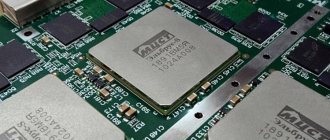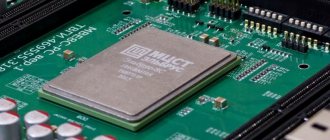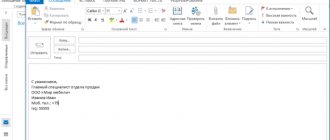Elbrus - Russian operating system
• OS name: Elbrus • Official website: mcst.ru • Developer: MCST; • OS family: Linux; • Interface language: Russian; • Treatment: Not required; • Processor with x86, x86-64 architecture; • RAM - at least 1 GB; • Hard disk space – at least 60 GB; • VGA compatible video card;
The Russian operating system "Elbrus" with index 4.0 (Original image based on Linux) is now available to everyone for installation on their computers and laptops.
Unlike most previous versions of the platform (which were only available for machines with Russian processors of the same name and were provided exclusively upon request), this one can be installed on any computer.
Elbrus OS (OSL) is a Linux distribution for Elbrus 2000 (E2K) and Elbrus-90micro (SPARC) architecture processors, developed at MCST based on the Linux kernel.
Structure of "OS Elbrus"
The Elbrus operating system is built using simultaneous use of open source algorithms that are generally available to global developers, as well as development tools created by MCST specialists. The second type of component includes a compiler capable of working with several computer languages. Elbrus OS, like other common user operating systems, can provide multitasking PC operation.
Concepts for managing software processes, interrupts, synchronization, etc. have been developed specifically for this OS. In order to optimize the Linux kernel for the tasks of the Elbrus computing complexes, the standard library responsible for computation threads - libpthread - was changed. Instead, OS developers created the elpthread library.
The Elbrus operating system also includes the following useful modules:
— command line, which allows the user to work with the computing system using text commands and interact in an appropriate way with various applications;
— tools for comprehensive archiving of files in order to increase the convenience of their transfer or storage;
— a set of development tools: compilers, link editors, debuggers, assemblers, editors, translators, various libraries, documentation tools, etc.
Among the key OS libraries is Glibe, which is also used on other Linux-based OSes.
This is general information about the operating system of the Elbrus MVK. It can be noted that this OS is largely designed for use by military structures, so it is difficult to find it in the public domain, like other Linux distributions.
What are the features of the PDK Elbrus distribution kit?
- Own package database, promptly updated directly from open source software developers;
- deb package format and dpkg and apt package management programs, like Debian and Ubuntu, but its own package building system based on .build files, abstracted from well-known distributions, be it Debian, Red Hat or SuSE;
- Own development infrastructure that supports isolation and reproducibility of package assembly, working with dependencies, using distributed assembly clusters, advanced multi-architecture, as well as taking into account all architectural features of the Elbrus platform;
- Support for cross-assembly mode for all hardware architectures of the Elbrus family.
At the moment, you can download PDK "Elbrus" 4.0 for x86-64 architecture. This allows you to install them as painlessly as possible on any PC with an Intel or AMD processor, familiarize yourself with the proposed set of packages and, if necessary, build your own.
It is noted that if the required package is assembled on x86 and x86-64, then it will work on the Russian Elbrus. Of course, taking into account the assembly for its architecture.
Why Elbrus-8S
Today, Elbrus 8C processors developed by the Russian company MCST represent one of the most productive domestic solutions. Specifications of the 28-nanometer Elbrus 8C chip include eight processor cores with an improved 64-bit Elbrus third generation architecture, L2 cache with a total capacity of 4 MB (8 x 512 KB) and L3 cache with a capacity of 16 MB.
Microprocessor "Elbrus-8S"
The processor operating frequency reaches 1.3 GHz, computing power is about 250 gigaflops per chip in single precision operations (FP32). Elbrus-8C processors are designed to work with DDR3-1600 memory with ECC support (up to four memory controllers).
Compared to Elbrus-4C, the peak capacity, according to the developers, is 3-5 times higher, the throughput of input-output channels is 8 times higher. Processors "Elbrus-8S" (1891VM10Ya) allow you to build scalable computing systems with high speed of processing and transfer of information.
System with Elbrus-8S processor
In February 2020, CNews reported the results of comparative testing of various Intel and AMD models. For the study, the resources of the RakeSearch thematic project of the Karelian Scientific Center of the Russian Academy of Sciences were used. Based on the test results, it turned out that the speed of single-threaded computing on the Elbrus-8C is two to four times lower than that of modern processors for desktop PCs, but when compared with server processors, the gap is reduced to one and a half to two times.
Comparison, multi-threaded mode
At the beginning of June 2020, CNews reported that MCST for the first time made publicly available a programming manual for the Elbrus computing platform, which also included a description of the microprocessor instruction system. Documentation is provided under the Creative Commons open license (CC-BY 4.0).
At the beginning of June 2020, CNews reported that the MCST company, a developer and manufacturer of domestic Elbrus microprocessors, provided Russian companies with free remote access to servers on its chips. The company believes that this proposal will help satisfy the interest of software developers who consider Elbrus as a potential basis for completely domestic hardware and software solutions.
The MCST page presents
- OPO "Elbrus" - general software based on Linux kernels versions 2.6.14, 2.6.33 and 3.14;
- Elbrus OS is a ported version of Debian 8.11 based on the Linux kernel version 4.9;
- PDK Elbrus OS is the same OS, but with development capabilities. This is said to be the most modern version of the OS. It is based on the Linux kernel version 4.9 and is intended for downloading and installation on computers with Russian-made processors;
- Elbrus OS for x86 architecture is an OS based on the Linux kernel versions 3.14 and 4.9 for processors with the x86 instruction system. At the same time, the version of Elbrus OS packages for microprocessors with the Elbrus command system has been preserved.
- Please note that the first two versions are provided only upon request as specialized software. The rest can be downloaded freely.
The other day, the domestic company MCST announced the release of its own operating system for processors based on the Elbrus architecture. The OS is intended for government agencies, but is based on the Linux kernel. So is this another “pseudo-Russian” development?
Not really. The new operating system is truly a Russian development, tailored primarily for the Elbrus processor architecture, which cannot be supported by operating systems developed for processors existing on the market today. For those who believe that nothing new can be created on the Linux kernel, let me remind you that the Android OS is based on the Linux kernel, and nothing - they somehow live with it.
The full name of the MCST operating system is Astra Linux Special Edition (Leningrad release). For now, this is, so to speak, a trial balloon, and they decided not to bother with the design of this balloon, and therefore the graphical interface takes you back somewhere to the mid-90s. To the average user, who is mostly used to watching pictures and movies on the Internet, playing games and surfing social networks, this design seems like a disadvantage. But from a utilitarian point of view, when all you need from a computer is maximum security and performance, this shell is ideal. No, of course, it was possible to add at least a little design and this would not overload the system, but let's remember that the task of this system is not to amaze the average user with its beauty, but to demonstrate its effectiveness to the government customer.
According to the requirements of the Russian FSB for means of protecting information containing state secrets."
Of course, there is no evidence of this yet. However, now you can download the OS version for common processors and install it on your computer to start getting acquainted with the system. And from a PR point of view, this is a very smart move, because as the philosopher L. Ron Hubbard wrote, “A person is only as alive as he can communicate.” And the fact that MCST actively communicates with the audience, future users and the expert community certainly adds life and good prospects to them in the future.
However, as soon as a full-fledged version on Elbrus processors becomes available, there will probably be people who want to purchase such a computer and check the stability and invulnerability of the system. This is where we will understand what’s what, and whether the game is worth the candle. Let us remind you that each computer will cost the state approximately 200,000 rubles, which is much more expensive than analogues with foreign components. In such a situation, safety may be a sufficient argument for such a price, but it must be very serious indeed.
As usual, time will tell what will come of this enterprise. We will wait and hope that MCST can become a truly effective national company, whose product we can be proud of even at the international level. Well, Durov did it.
Artem Kuznetsov
Versions of Elbrus distribution kits
- OPO "Elbrus" - general software;
- Elbrus OS is a ported version of Debian 8.11;
- PDK OS "Elbrus" - (Platform Development Kit, developer kit) the same OS, but with development capabilities. This is said to be the most modern version of the OS. It is intended for downloading and installation on computers with Russian-made processors;
- Elbrus OS for x86 architecture - OS for processors with the x86 instruction system. At the same time, the version of Elbrus OS packages for microprocessors with the Elbrus command system has been preserved.
Original images of “Elbrus” (Official website of MCST)
Click on - download, we get to the official website of MCST JSC, to the software page, and select installation disks. To avoid a request, select as in (Fig. 1).
(Fig.1)
Next we go to Yandex.Disk, where we download the x86_64.iso image (Fig. 2)
(Fig.2)
Software comments
“Versions of OPO Elbrus and OS Elbrus (OS version Debian 8.11 based on the Linux kernel version 4.9 ported to the Elbrus platform) are of interest only to highly specialized specialists, so the main emphasis is on the other two products in the development portfolio,” notes the employee MCST.
Elbrus OS for x86, in his understanding, is suitable for the first acquaintance with Russian microprocessors, he believes..
As for the installation of PDK OS "Elbrus" on computers controlled by microprocessors "Elbrus-1C+", "Elbrus-4C", "Elbrus-8C" and "MCST R" with the SPARC V9 command system, then, according to a company employee, developer, allows you to get the latest OS for domestic microprocessors, assembled using the MCST company’s own system for quickly and conveniently incorporating new packages into the distribution and supporting existing versions.
“The Elbrus OS PDK is developed with maximum preservation of the “vanilla” versions of packages, affecting only architecture-dependent sections of the code - both the kernel and system packages,” he adds.
- The best software for ensuring a company’s IT security is on the Market.CNews IT marketplace. With prices.
- Short link
The developers describe the properties of their Elbrus OS product
The PDK Elbrus distribution has the following features:
- Own package database, promptly updated directly from open source software developers;
- deb package format and dpkg and apt package management programs, like Debian and Ubuntu, but its own package building system based on .build files, abstracted from well-known distributions, be it Debian, Red Hat or SuSE;
- Own development infrastructure that supports isolation and reproducibility of package assembly, working with dependencies, using distributed assembly clusters, advanced multi-architecture, as well as taking into account all architectural features of the Elbrus platform;
- Support for cross-assembly mode for all hardware architectures of the Elbrus family.
Interesting facts about developments from MCST
The Elbrus operating system and the domestic 4C processor are among the flagships of the MCST company. However, the Russian developer, of course, is not limited to releasing and supporting relevant solutions. Let's look at what software and hardware products the brand produces today.
It is known that MCST CJSC is developing two basic lines of microprocessors - with VLIW and SPARC architectures. As for the first architecture, processors of the MCST-R series, as well as MCST-4R, are produced on its basis. Elbrus chips are those based on the VLIW architecture. However, Elbrus series computers can be equipped with both types of processors.
In total, the Russian developer created three main operating systems. Firstly, this is an operating system of the OSL_3M1 type, optimized for the Elbrus-3M1 complexes. Secondly, this is OSL_90, which was created for the Elbrus-90 micro complex. Thirdly, this is OS_E90, which is based on the Solaris operating system in version 2.5.1. The first two operating systems are often combined under a single name - Elbrus OS. It is also known that a special version of the OS is being developed for the latest 8C processor, which we mentioned above.
An interesting fact is that the name of the processors, ready-made solutions and OS developed by MCST is almost identical to the ElbRUS localization system, popular in 2000 among users of computers based on the EPOC OS. This operating system, according to some sources, became the prototype of Symbian. The capabilities of the ElbRUS localization system impressed many enthusiasts of the corresponding type of device. However, data that would indicate the continuity of the two brands was not made available to the general public.











